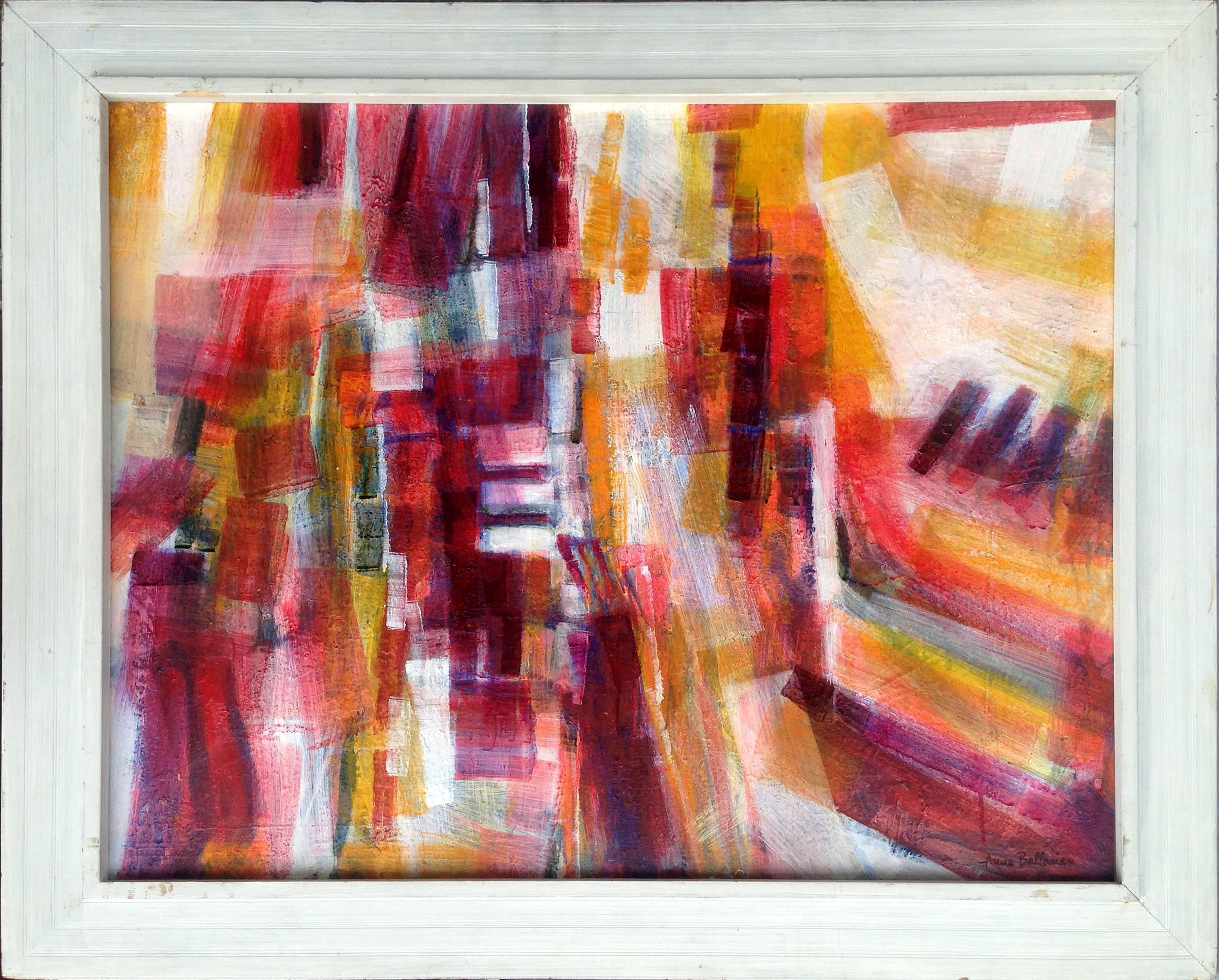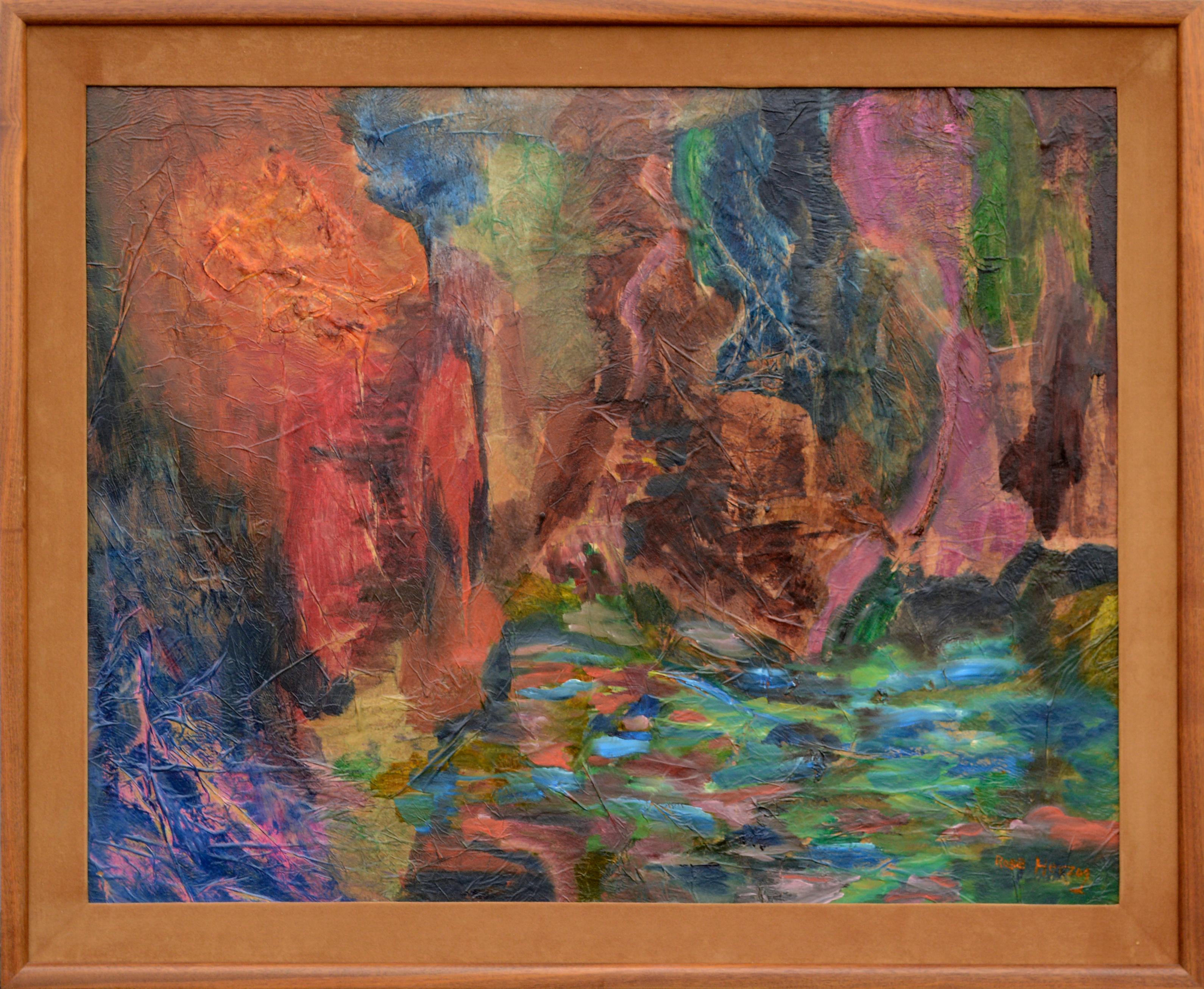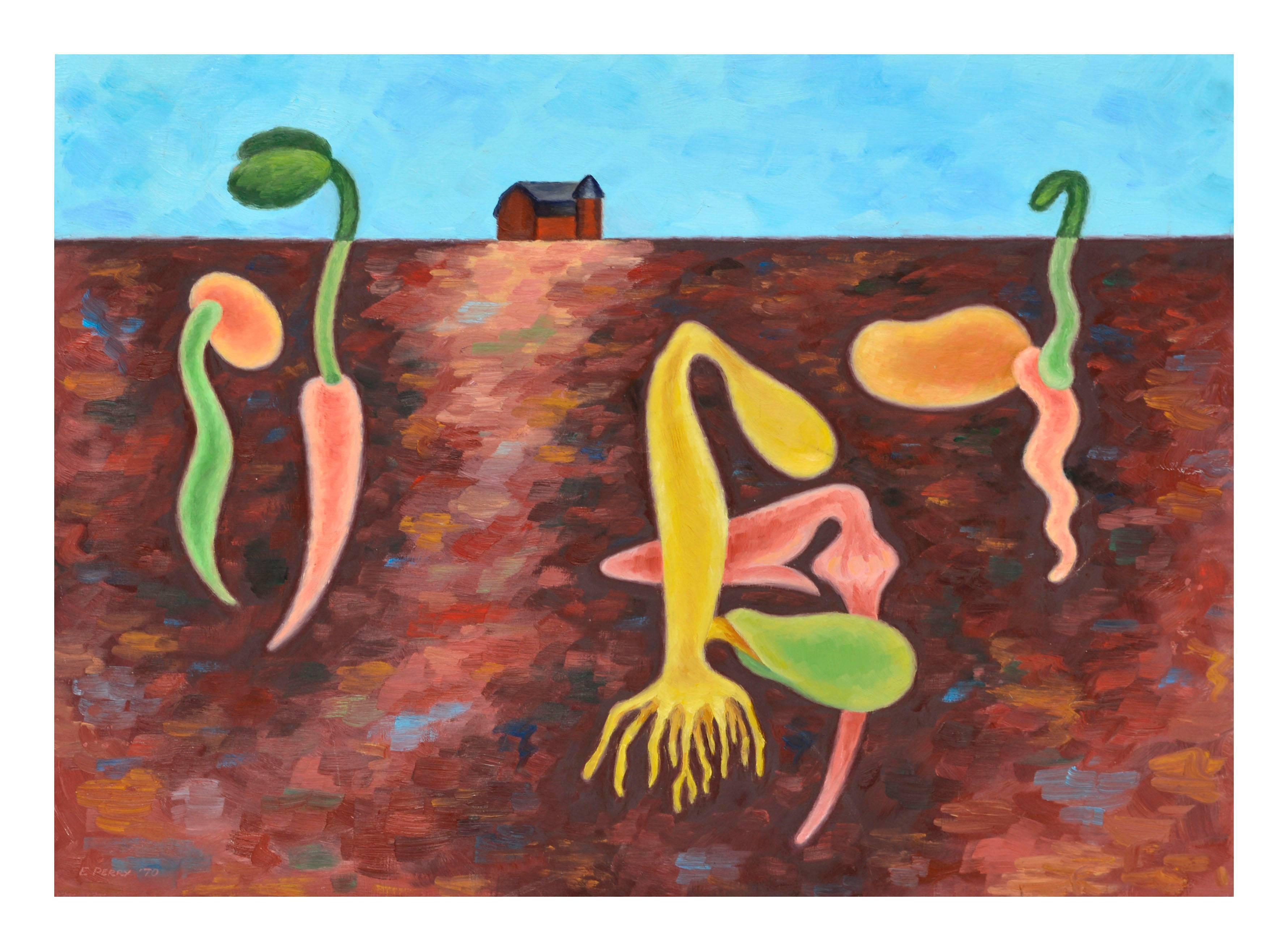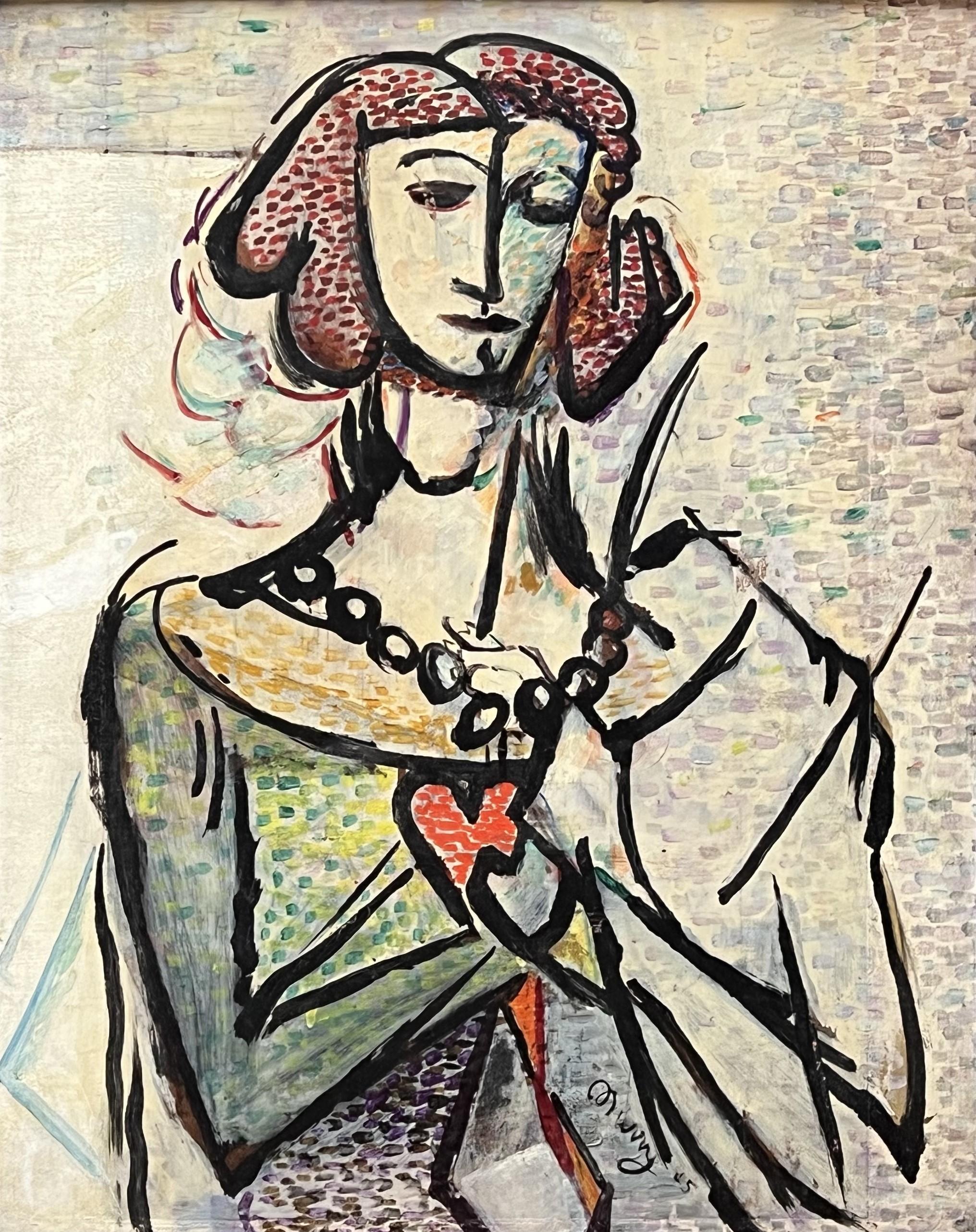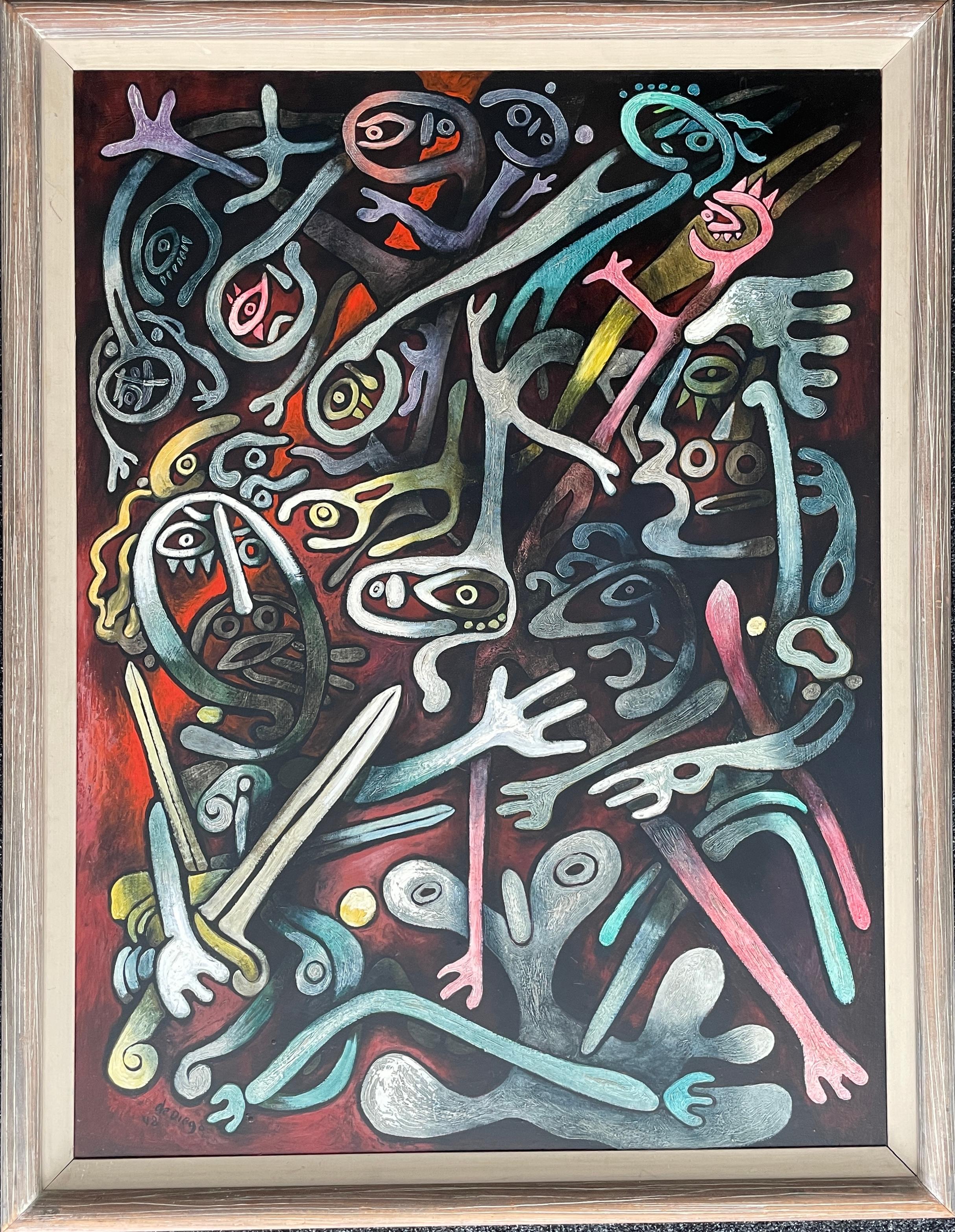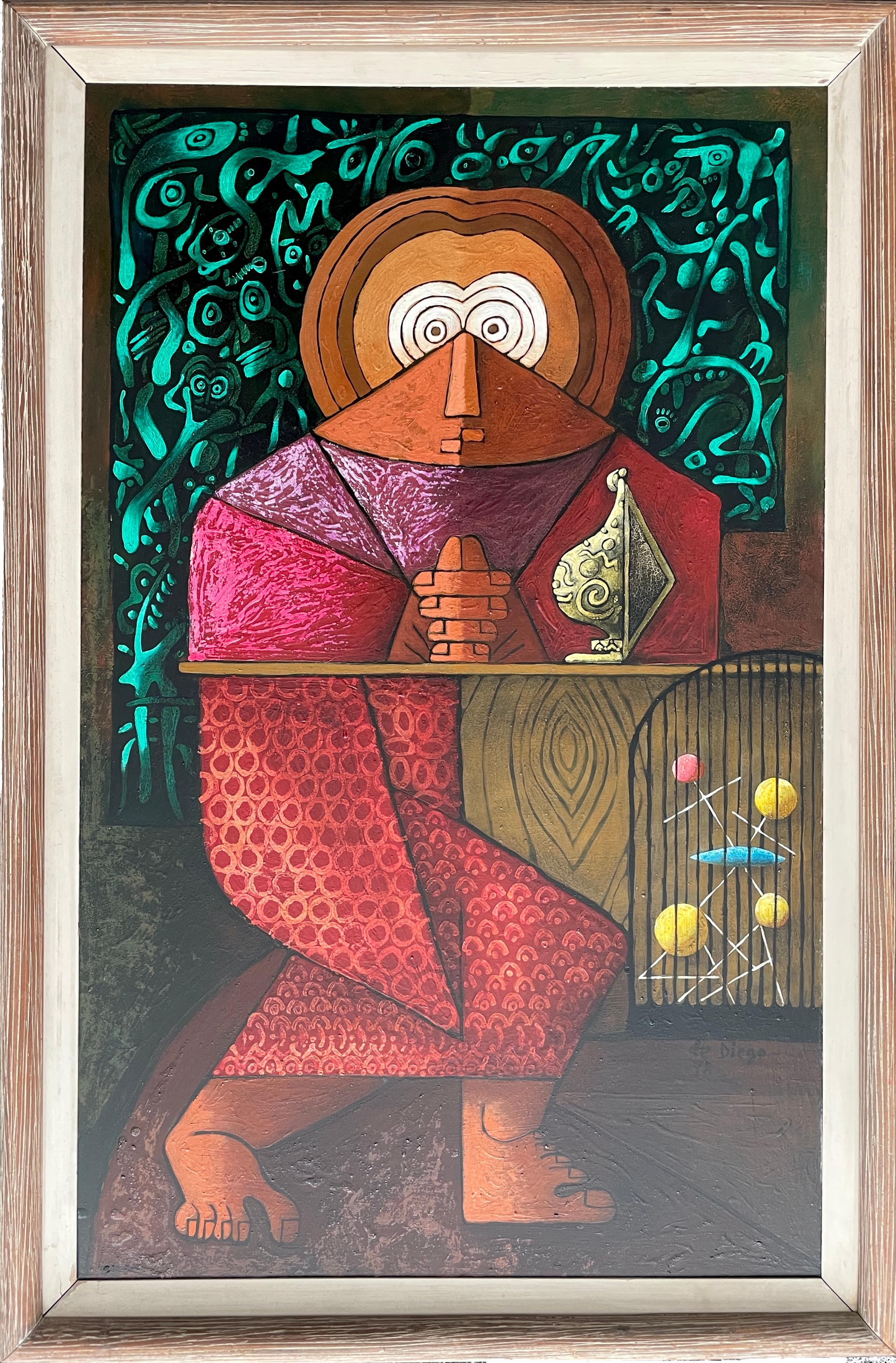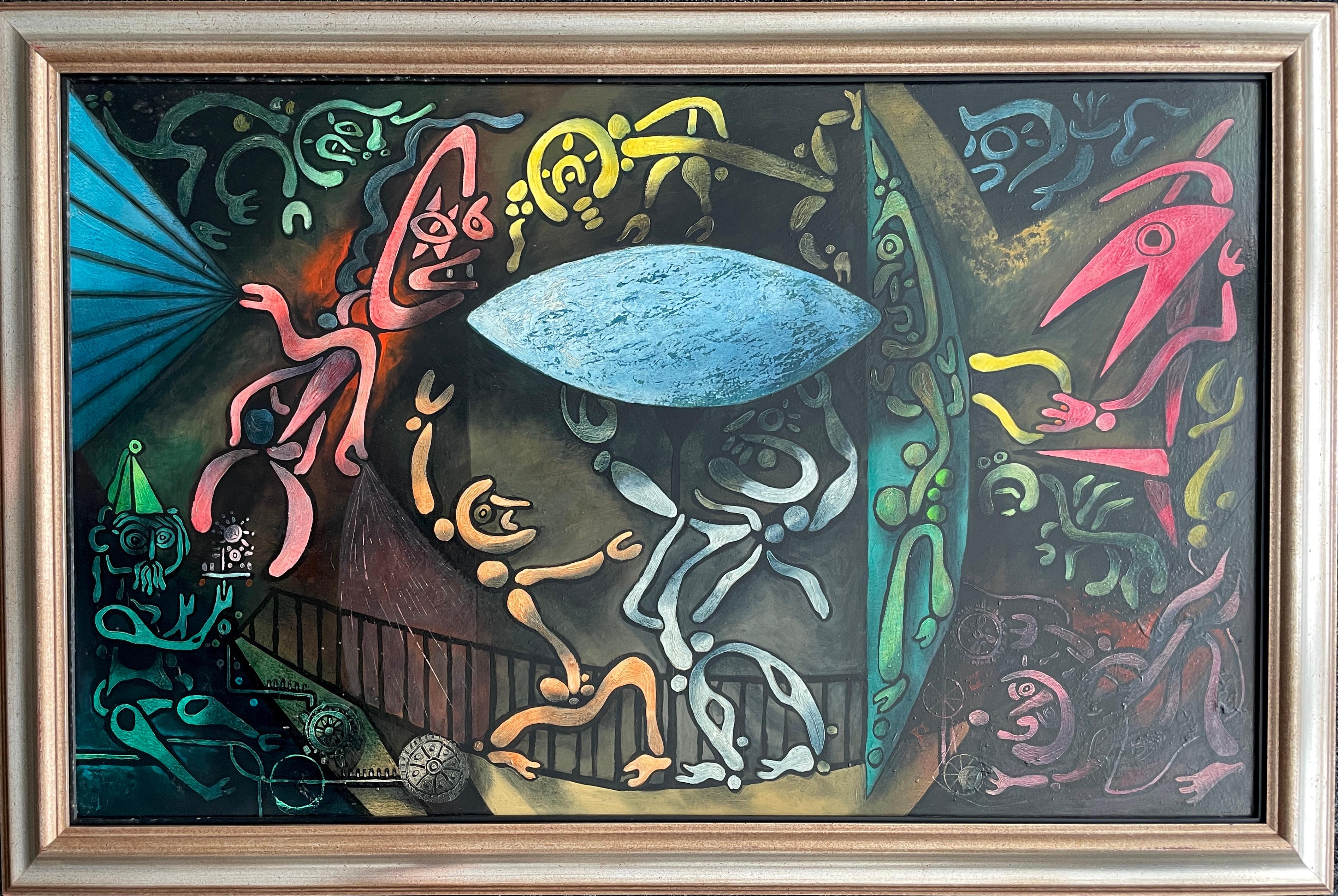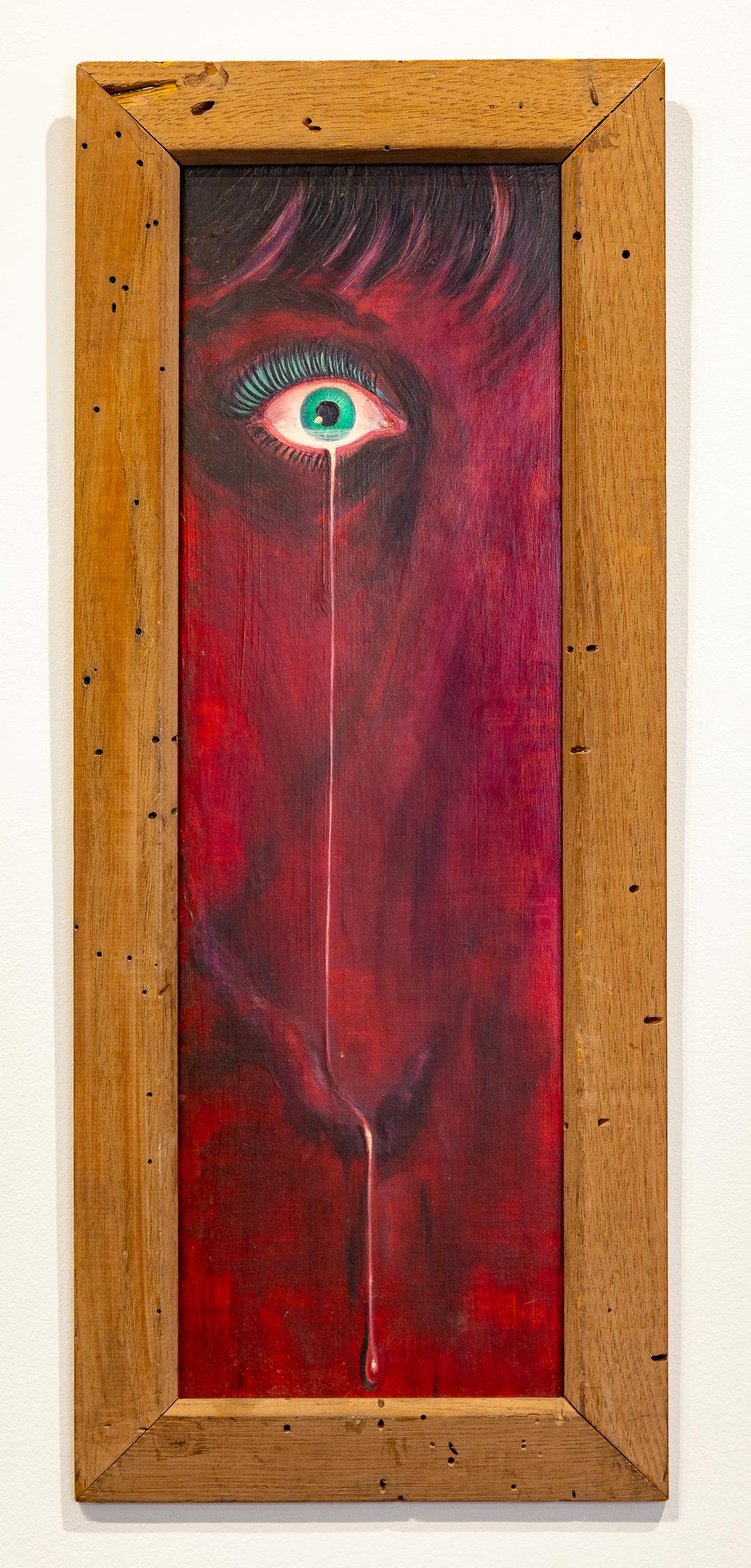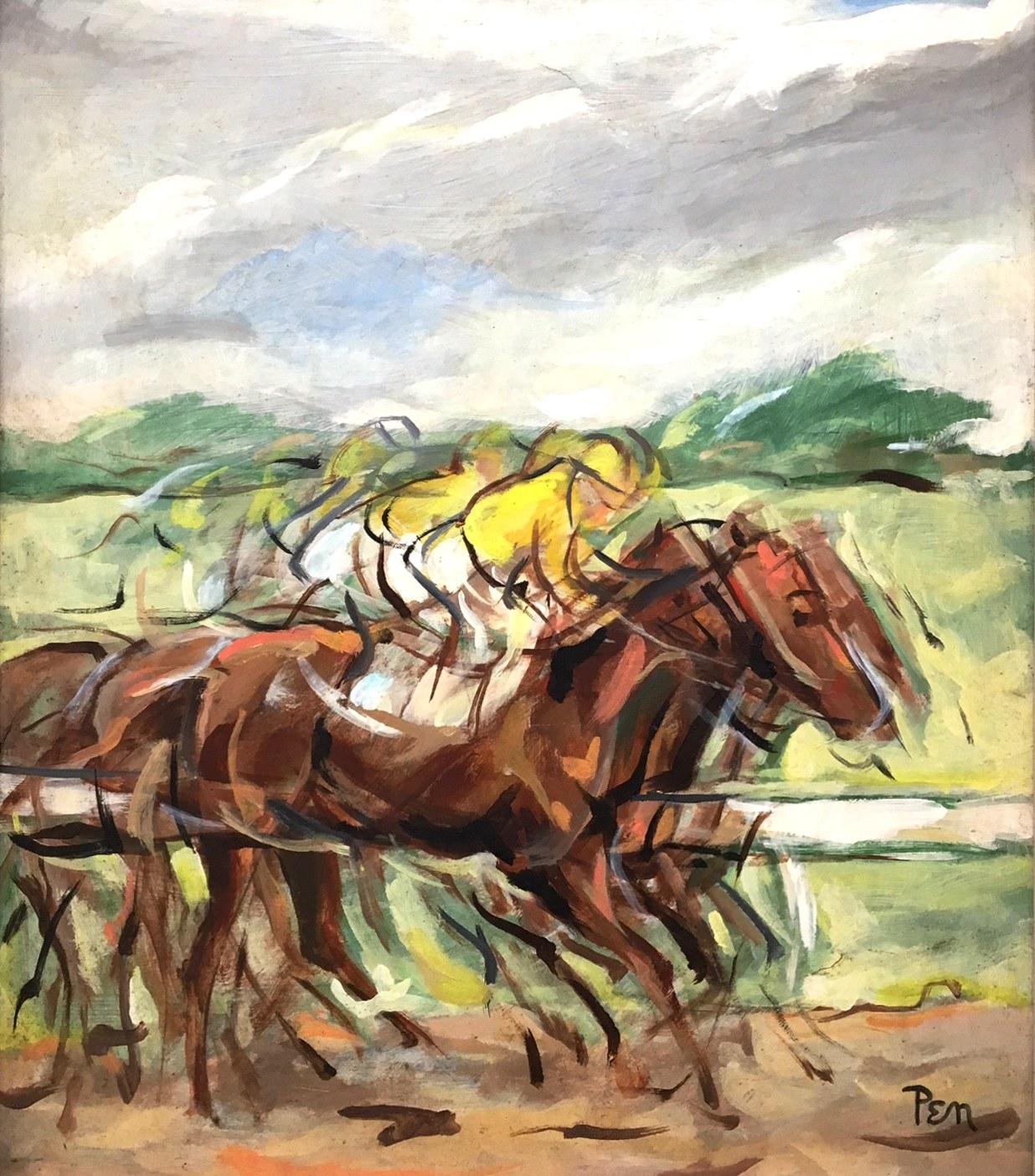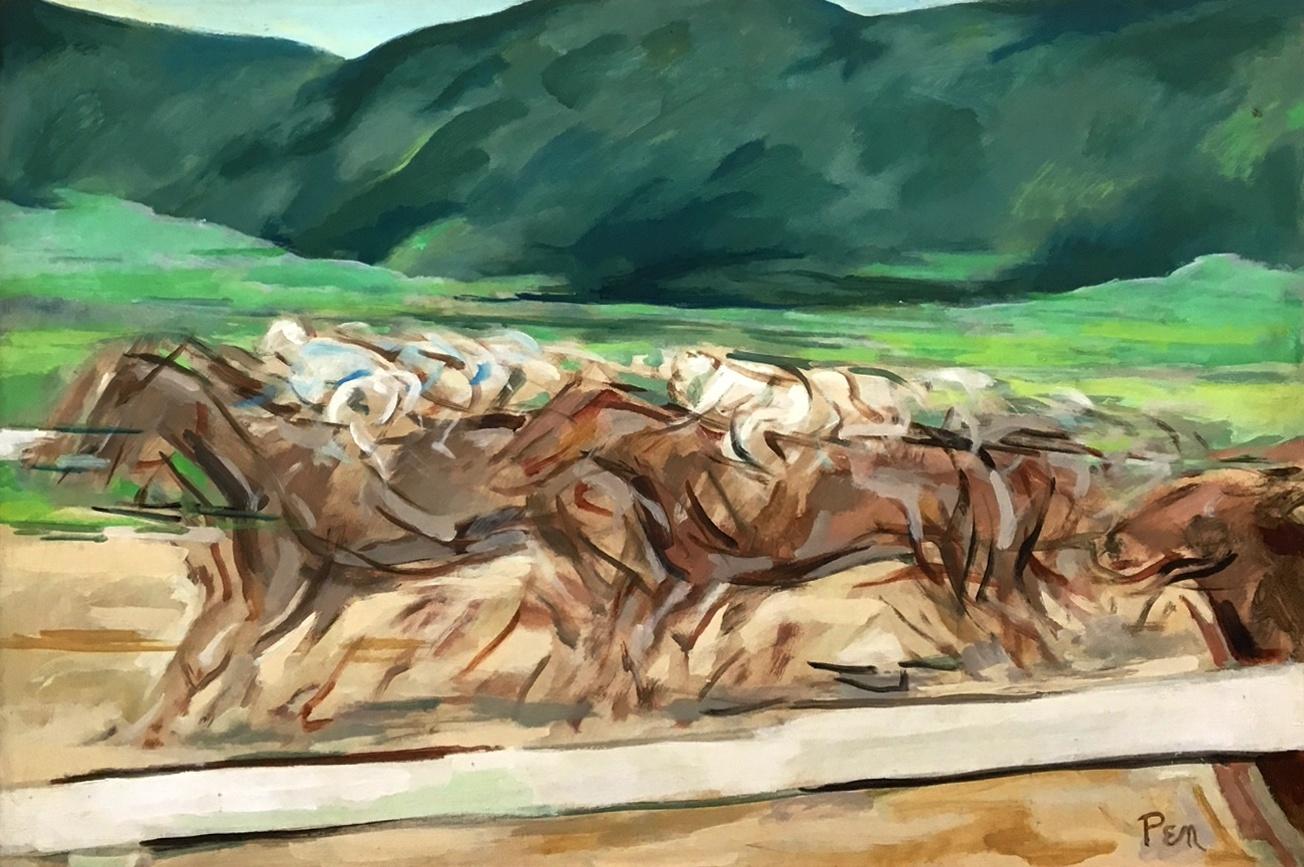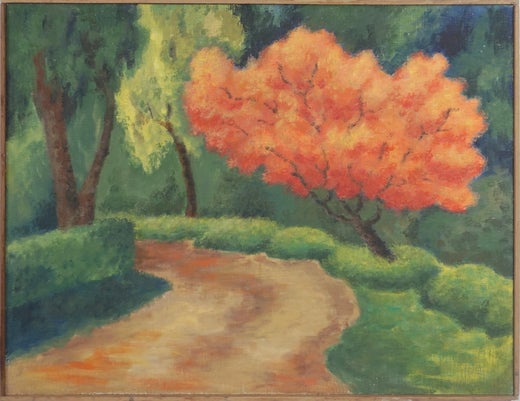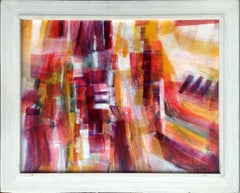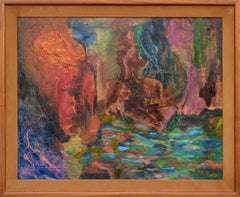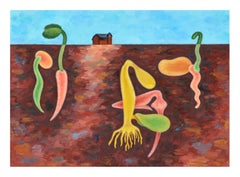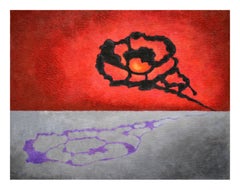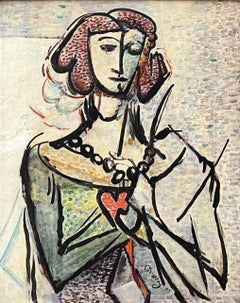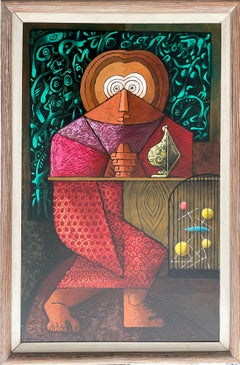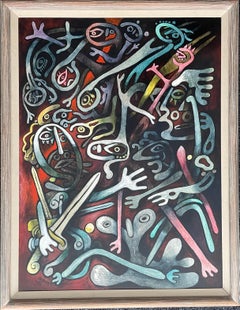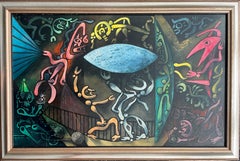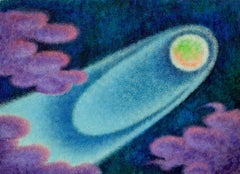
Like a Comet - Abstract Landscape
View Similar Items
Want more images or videos?
Request additional images or videos from the seller
1 of 10
Eleanor PerryLike a Comet - Abstract Landscape1968
1968
About the Item
- Creator:Eleanor Perry (1928 - 2014, American)
- Creation Year:1968
- Dimensions:Height: 24 in (60.96 cm)Width: 33 in (83.82 cm)Depth: 1 in (2.54 cm)
- Medium:
- Movement & Style:
- Period:
- Condition:Wear to edges consistent with age.
- Gallery Location:Soquel, CA
- Reference Number:Seller: JT-j22651stDibs: LU5421507733
Eleanor Perry
Eleanor Perry (American, 1903-1996) was a San Francisco and Monterey artist, Exhibited California Art Club; listed in Artists in California 1786-1940 by Edan Hughes. Graduated from the University of California at Berkeley in 1923.
About the Seller
5.0
Platinum Seller
Premium sellers with a 4.7+ rating and 24-hour response times
Established in 1986
1stDibs seller since 2014
2,891 sales on 1stDibs
Authenticity Guarantee
In the unlikely event there’s an issue with an item’s authenticity, contact us within 1 year for a full refund. DetailsMoney-Back Guarantee
If your item is not as described, is damaged in transit, or does not arrive, contact us within 7 days for a full refund. Details24-Hour Cancellation
You have a 24-hour grace period in which to reconsider your purchase, with no questions asked.Vetted Professional Sellers
Our world-class sellers must adhere to strict standards for service and quality, maintaining the integrity of our listings.Price-Match Guarantee
If you find that a seller listed the same item for a lower price elsewhere, we’ll match it.Trusted Global Delivery
Our best-in-class carrier network provides specialized shipping options worldwide, including custom delivery.More From This Seller
View All"Aerial Composition" - Mid Century Magenta & Red Abstract
By Anna Ballarian
Located in Soquel, CA
Emotive abstract in warm colors by Anna Ballarian (American, 1918-2010), playing with deep contextualized Magenta and Ochre and blurred collage blocks to an extraordinary Kinetic aff...
Category
1960s American Modern Abstract Paintings
Materials
Masonite, Oil
Shimmering Pond in the Woods - Surrealist Abstract 1960s
By Rose Herzog
Located in Soquel, CA
Shimmering Pond in the Woods - Surrealist Abstract 1960s
Highly textured abstract composition by Rose Herzog (American, mid-20th Century). A multicolored pond is shown in the middle...
Category
1960s American Modern Abstract Paintings
Materials
Cotton, Masonite, Mixed Media, Oil, Tissue Paper
Spring Has Sprung on the Farm - Abstracted Landscape in Oil on Masonite
By Eleanor Perry
Located in Soquel, CA
Spring Has Sprung on the Farm - Abstracted Landscape in Oil on Masonite
Abstract farm with seeds sprouting in a bold abstract expressionist painting by ...
Category
1970s American Modern Abstract Paintings
Materials
Masonite, Oil
Mid Century Celestial Reflection Landscape in Oil on Masonite
By Eleanor Perry
Located in Soquel, CA
Mid Century Celestial Reflection Landscape in Oil on Masonite
Celestial reflection, a bold abstract expressionist painting by San Francisco, California artist Eleanor Perry (America...
Category
1960s American Modern Abstract Paintings
Materials
Masonite, Oil
Like a Comet - Nocturnal Sky in Oil on Masonite
By Eleanor Perry
Located in Soquel, CA
Like a Comet - Nocturnal Sky in Oil on Masonite
Surrealistic oil painting landscape of comet by listed San Francisco, California artist Eleanor Perry (American, 1928-2014). Signed ...
Category
1960s American Modern Abstract Paintings
Materials
Masonite, Oil
Johann Strauss & Artie Shaw - Mid Century Modern Abstract
By Clark Blocher
Located in Soquel, CA
Johann Strauss & Artie Shaw - Mid Century Modern Abstract
Swirling vortex of color and the words: "Johann Strauss' Tale(s) from the Vienna (Woods) Artie Shaw & Orchestra" by Kansas ...
Category
1960s American Modern Abstract Paintings
Materials
Masonite, Oil
You May Also Like
Untitled (Cubist Portrait)
By Jerre H. Murry
Located in Los Angeles, CA
This work is part of our exhibition - America Coast to Coast: Artists of the 1940s
Untitled (Cubist Portrait), 1945, oil on masonite, signed and dated lower middle, 20 x 16 inches, remnant of exhibition label verso, perhaps exhibited at Murry's solo exhibition at the Los Angeles's Screen Cartoonists' Gallery, July , 1945, presented in its original frame
Jerre Murry was a California modernist painter. Born in Columbia, Missouri, Murry studied at the Detroit Academy of Art and worked as an artist for the Detroit News and Detroit Free Press. Murry traveled to the Bahamas, where he was inspired to paint modernist scenes of island life and people. By the early 1930s, Murry had relocated to Los Angeles, where he caught the attention of Synchromist painter Stanton Macdonald Wright, State Supervisor for the Federal Art Project (FAP) in Southern California. MacDonald Wright enrolled Murry into the FAP. Murry’s Gauguin-influenced painting Sun Image was exhibited together with other FAP artists at the Los Angeles County Museum of Art in 1936, and Murry was also included in the FAP exhibit at the Paris Exposition in 1937. Stendahl Galleries in Los Angeles, the Chamber of Commerce Gallery in Santa Barbara, and at the Los Angeles County Museum of Art also showed Murry’s work during the 1930s. Murry created a murals for Los Angeles Water & Power Company, the Boise, Idaho Post Office, and Glendale Junior College. In 1939, Murry's work was exhibited at the Golden Gate International Exposition and the New York World's Fair. He also was included in the All California Exhibition at the Los Angeles County Museum of art that same year. He went on to exhibit in Los Angeles at the Foundation of Western Art's Trends in Southern California Art shows in 1940 and 1941, at Raymond and Raymond Gallery in Hollywood and USC’s Elizabeth Holmes...
Category
1940s American Modern Paintings
Materials
Masonite, Oil
St. Atomic oil and tempera painting by Julio de Diego
By Julio de Diego
Located in Hudson, NY
Julio De Diego’s Atomic Series paintings made an extraordinary statement regarding the shock and fear that accompanied the dawn of the nuclear age. In the artist’s own words, “Scientists were working secretly to develop formidable powers taken from the mysterious depths of the earth - with the power to make the earth useless! Then, the EXPLOSION! . . . we entered the Atomic Age, and from there the neo-Atomic war begins. Explosions fell everywhere and man kept on fighting, discovering he could fight without flesh.”
To execute these works, De Diego developed a technique of using tempera underpainting before applying layer upon layer of pigmented oil glazes. The result is paintings with surfaces which were described as “bonelike” in quality. The forms seem to float freely, creating a three-dimensional visual effect. In the 1954 book The Modern Renaissance in American Art, author Ralph Pearson summarizes the series as “a fantastic interpretation of a weighty theme. Perhaps it is well to let fantasy and irony appear to lighten the devastating impact. By inverse action, they may in fact increase its weight.”
Exhibited
1950 University of Illinois at Urbana "Contemporary American Painting"
1964 Marion Koogler McNay Art Institute, San Antonio, Texas
This work retains its original frame which measures 54" x 36" x 2".
About this artist: Julio De Diego crafted a formidable persona within the artistic developments and political struggles of his time. The artist characterized his own work as “lyrical,” explaining, “through the years, the surrealists, the social-conscious painters and the others tried to adopt me, but I went my own way, good, bad or indifferent.” [1] His independence manifested early in life when de Diego left his parent’s home in Madrid, Spain, in adolescence following his father’s attempts to curtail his artistic aspirations. At the age of fifteen he held his first exhibition, set up within a gambling casino. He managed to acquire an apprenticeship in a studio producing scenery for Madrid’s operas, but moved from behind the curtains to the stage, trying his hand at acting and performing as an extra in the Ballet Russes’ Petrouchka with Nijinsky. He spent several years in the Spanish army, including a six-month stretch in the Rif War of 1920 in Northern Africa. His artistic career pushed ahead as he set off for Paris and became familiar with modernism’s forays into abstraction, surrealism, and cubism.
The artist arrived in the U.S. in 1924 and settled in Chicago two years later. He established himself with a commission for the decoration of two chapels in St. Gregory’s Church. He also worked in fashion illustration, designed magazine covers and developed a popular laundry bag for the Hotel Sherman. De Diego began exhibiting through the Art Institute of Chicago in 1929, and participated in the annual Chicago Artists Exhibitions, Annual American Exhibitions, and International Water Color Exhibitions. He held a solo exhibition at the Art Institute of Chicago in the summer of 1935. Though the artist’s career was advancing, his family life had deteriorated. In 1932 his first marriage dissolved, and the couple’s young daughter Kiriki was sent to live with friend Paul Hoffman.
De Diego continued to develop his artistic vocabulary with a growing interest in Mexican art. He traveled throughout the country acquainting himself with the works of muralists such as Carlos Merida, and also began a collection of small native artifacts...
Category
1940s American Modern Abstract Paintings
Materials
Masonite, Oil, Tempera
The Magician oil and tempera painting by Julio de Diego
By Julio de Diego
Located in Hudson, NY
Julio De Diego’s Atomic Series paintings made an extraordinary statement regarding the shock and fear that accompanied the dawn of the nuclear age. In the artist’s own words, “Scientists were working secretly to develop formidable powers taken from the mysterious depths of the earth - with the power to make the earth useless! Then, the EXPLOSION! . . . we entered the Atomic Age, and from there the neo-Atomic war begins. Explosions fell everywhere and man kept on fighting, discovering he could fight without flesh.”
To execute these works, De Diego developed a technique of using tempera underpainting before applying layer upon layer of pigmented oil glazes. The result is paintings with surfaces which were described as “bonelike” in quality. The forms seem to float freely, creating a three-dimensional visual effect. In the 1954 book The Modern Renaissance in American Art, author Ralph Pearson summarizes the series as “a fantastic interpretation of a weighty theme. Perhaps it is well to let fantasy and irony appear to lighten the devastating impact. By inverse action, they may in fact increase its weight.”
Exhibited
1964 Marion Koogler McNay Art Institute, San Antonio, Texas
This work retains its original frame which measures 54" x 42" x 2"
About this artist: Julio De Diego crafted a formidable persona within the artistic developments and political struggles of his time. The artist characterized his own work as “lyrical,” explaining, “through the years, the surrealists, the social-conscious painters and the others tried to adopt me, but I went my own way, good, bad or indifferent.” [1] His independence manifested early in life when de Diego left his parent’s home in Madrid, Spain, in adolescence following his father’s attempts to curtail his artistic aspirations. At the age of fifteen he held his first exhibition, set up within a gambling casino. He managed to acquire an apprenticeship in a studio producing scenery for Madrid’s operas, but moved from behind the curtains to the stage, trying his hand at acting and performing as an extra in the Ballet Russes’ Petrouchka with Nijinsky. He spent several years in the Spanish army, including a six-month stretch in the Rif War of 1920 in Northern Africa. His artistic career pushed ahead as he set off for Paris and became familiar with modernism’s forays into abstraction, surrealism, and cubism.
The artist arrived in the U.S. in 1924 and settled in Chicago two years later. He established himself with a commission for the decoration of two chapels in St. Gregory’s Church. He also worked in fashion illustration, designed magazine covers and developed a popular laundry bag for the Hotel Sherman. De Diego began exhibiting through the Art Institute of Chicago in 1929, and participated in the annual Chicago Artists Exhibitions, Annual American Exhibitions, and International Water Color Exhibitions. He held a solo exhibition at the Art Institute of Chicago in the summer of 1935. Though the artist’s career was advancing, his family life had deteriorated. In 1932 his first marriage dissolved, and the couple’s young daughter Kiriki was sent to live with friend Paul Hoffman.
De Diego continued to develop his artistic vocabulary with a growing interest in Mexican art. He traveled throughout the country acquainting himself with the works of muralists such as Carlos Merida, and also began a collection of small native artifacts...
Category
1940s American Modern Abstract Paintings
Materials
Masonite, Oil, Tempera
Inevitable Day – Birth of the Atom oil and tempera painting by Julio De Diego
By Julio de Diego
Located in Hudson, NY
Julio De Diego’s Atomic Series paintings made an extraordinary statement regarding the shock and fear that accompanied the dawn of the nuclear age. In the artist’s own words, “Scientists were working secretly to develop formidable powers taken from the mysterious depths of the earth - with the power to make the earth useless! Then, the EXPLOSION! . . . we entered the Atomic Age, and from there the neo-Atomic war begins. Explosions fell everywhere and man kept on fighting, discovering he could fight without flesh.”
To execute these works, De Diego developed a technique of using tempera underpainting before applying layer upon layer of pigmented oil glazes. The result is paintings with surfaces which were described as “bonelike” in quality. The forms seem to float freely, creating a three-dimensional visual effect. In the 1954 book The Modern Renaissance in American Art, author Ralph Pearson summarizes the series as “a fantastic interpretation of a weighty theme. Perhaps it is well to let fantasy and irony appear to lighten the devastating impact. By inverse action, they may in fact increase its weight.”
Bibliography
Art in America, April 1951, p.78
About this artists: Julio De Diego crafted a formidable persona within the artistic developments and political struggles of his time. The artist characterized his own work as “lyrical,” explaining, “through the years, the surrealists, the social-conscious painters and the others tried to adopt me, but I went my own way, good, bad or indifferent.” [1] His independence manifested early in life when de Diego left his parent’s home in Madrid, Spain, in adolescence following his father’s attempts to curtail his artistic aspirations. At the age of fifteen he held his first exhibition, set up within a gambling casino. He managed to acquire an apprenticeship in a studio producing scenery for Madrid’s operas, but moved from behind the curtains to the stage, trying his hand at acting and performing as an extra in the Ballet Russes’ Petrouchka with Nijinsky. He spent several years in the Spanish army, including a six-month stretch in the Rif War of 1920 in Northern Africa. His artistic career pushed ahead as he set off for Paris and became familiar with modernism’s forays into abstraction, surrealism, and cubism.
The artist arrived in the U.S. in 1924 and settled in Chicago two years later. He established himself with a commission for the decoration of two chapels in St. Gregory’s Church. He also worked in fashion illustration, designed magazine covers and developed a popular laundry bag for the Hotel Sherman. De Diego began exhibiting through the Art Institute of Chicago in 1929, and participated in the annual Chicago Artists Exhibitions, Annual American Exhibitions, and International Water Color Exhibitions. He held a solo exhibition at the Art Institute of Chicago in the summer of 1935. Though the artist’s career was advancing, his family life had deteriorated. In 1932 his first marriage dissolved, and the couple’s young daughter Kiriki was sent to live with friend Paul Hoffman.
De Diego continued to develop his artistic vocabulary with a growing interest in Mexican art. He traveled throughout the country acquainting himself with the works of muralists such as Carlos Merida, and also began a collection of small native artifacts...
Category
1940s American Modern Abstract Paintings
Materials
Masonite, Oil, Tempera
"Don't Cry Long" Abstracted and Distorted Self-Portrait, One Crying Eye
Located in Detroit, MI
"Don't Cry Long" is a self-portrait of the artist and an unusual one at that in which the artist portrays herself shedding tears. Perhaps it is an expression of some grief experienced by Ms. Woodlock, but it also admonishes her to not "Cry Long" while at the same time poking fun because of her elongated face and the one lone "long" tear tracing a pattern down her face. In addition to self-portraits, Ethelyn painted commissioned portraits. In this painting her head is cocked and her famous bangs hang down her forehead. Compare two self-portraits, “Up From Under”, and “M’Eyes" to "Don't Cry Long." The major differences are the close facial view and the brilliant blood red paint that fills the entire canvas.
This painting is included in the book, "Dreams Have Wings: An Artist's Journey into Magic and Mystery" printed in the United States, 1985. She describes "Don't Cry Long" as showing how funny looking we are, if we cry too long.
Ethelyn Woodlock...
Category
Mid-20th Century American Modern Abstract Paintings
Materials
Oil, Masonite
A Dynamic Mid-Century Modern Horse Race Painting by Chicago Artist, Rudolph Pen
Located in Chicago, IL
A dynamic, Mid-Century Modern horse race painting by noted Chicago artist, Rudolph Pen. Artwork size: 27" x 23"; Framed size: 27 1/2" x 23 1/2". Signed "Pen" lower right. Provenan...
Category
Mid-20th Century American Modern Animal Paintings
Materials
Masonite, Oil
